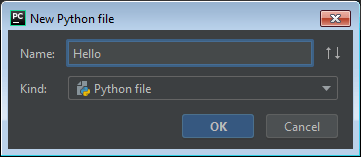How PyCharm supports Flask in Python?
Last Updated :
29 Feb, 2024
Flask is a reliable framework for Python web applications and APIs. It is a well-liked option among developers due to its simplicity and adaptability. But to fully realize its potential, effective instruments are needed. PyCharm shows up as a powerful ally with a ton of capabilities designed specifically for Flask development. Let’s explore what PyCharm is, why it’s great for Flask development, and how it helps with Flask projects step-by-step.
What is Pycharm?
PyCharm, developed by JetBrains, is an intelligent Python IDE designed to enhance the productivity of Python developers. It offers a wide array of features, including code completion, intelligent code analysis, version control integration, and advanced debugging capabilities. PyCharm is available in two editions: PyCharm Community, which is free and open-source, and PyCharm Professional, which includes additional features for professional developers.
Advantages of Using PyCharm for Flask
- Intelligent Code Assistance: PyCharm provides smart code completion and suggestions, which significantly speeds up the development process. For Flask, PyCharm understands the Flask-specific syntax, helping developers write cleaner and error-free code.
- Integrated Flask Server: PyCharm allows developers to run and debug Flask applications directly from the IDE. With a built-in Flask server configuration, developers can test their applications seamlessly without the need for external tools.
- Template Language Support: Flask uses Jinja2 as its default templating engine. PyCharm recognizes and supports Jinja2 template syntax, providing context-aware code completion, error highlighting, and navigation within templates.
- Database Tools Integration: Many Flask applications involve interacting with databases. PyCharm’s database tools integration allows developers to manage databases, execute SQL queries, and visualize data within the IDE.
Python Pycharm – Flask
Below, we will create simple project and understand How PyCharm supports Flask.
Create a Virtual Environment
First, create the virtual environment using the below commands
python -m venv env
.\env\Scripts\activate.ps1
Let’s create a small Flask project that fulfills your requirements. First, make sure you have Flask installed. You can install it using:
pip install Flask
Below are the guide thorugh image fro creating file in PyCharm for Flask .

Create New File
Click OK and you are ready to code in the PyCharm editor.

Click OK
File Structure

File Structure
Setting Necessary File
Hello.py : Below code defines a Flask web application with two routes. The ‘/’ route renders an ‘index.html’ template, while the ‘/visit_geeksforgeeks‘ route redirects to the GeeksforGeeks website. When the script is run, the Flask app starts in debug mode. The `render_template` function renders HTML templates, and the `redirect` function sends a client to a different URL.
Python3
from flask import Flask, render_template, redirect
app = Flask(__name__)
@app.route('/')
def home():
return render_template('index.html')
@app.route('/visit_geeksforgeeks')
def visit_geeksforgeeks():
if __name__ == '__main__':
app.run(debug=True)
|
templates/index.html
The HTML document defines a page with a centered heading “Welcome to GeeksforGeeks” and a button styled with CSS. The button has a green background, white text, and expands to blue on hover. However, the button is positioned far to the right (margin-left: 700px), which might cause layout issues.
HTML
<!DOCTYPE html>
<html lang="en">
<head>
<meta charset="UTF-8">
<meta name="viewport" content="width=device-width, initial-scale=1.0">
<title>Welcome to GeeksforGeeks</title>
<style>
.welcome-text {
text-align: center;
font-size: 24px;
}
.visit-button {
display: inline-block;
padding: 10px 20px;
margin-top: 15px;
text-decoration: none;
background-color: green;
color: #fff;
margin-left: 700px;
border-radius: 5px;
font-size: 18px;
transition: background-color 0.3s ease;
}
.visit-button:hover {
background-color: #0056b3;
}
</style>
</head>
<body>
<br><br>
<div class="welcome-text">Welcome to GeeksforGeeks</div>
<br>
<a href="{{ url_for('visit_geeksforgeeks') }}" class="visit-button">Visit</a>
</body>
</html>
|
Run the server
To run the server use the below command.
python script_name.py
Output

Output
Conclusion
In Conclusion , PyCharm supports Flask development by providing a dedicated Flask project template, allowing easy creation of Flask applications. It offers features like code completion, navigation, and debugging for Flask-specific code, enhancing development efficiency. PyCharm’s integrated support for virtual environments, templates, and Flask-specific configurations streamlines the development process, making it a comprehensive and user-friendly IDE for Flask projects.
Share your thoughts in the comments
Please Login to comment...